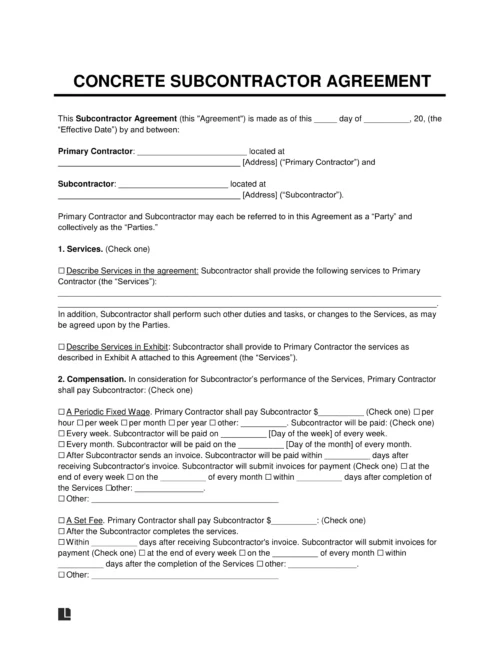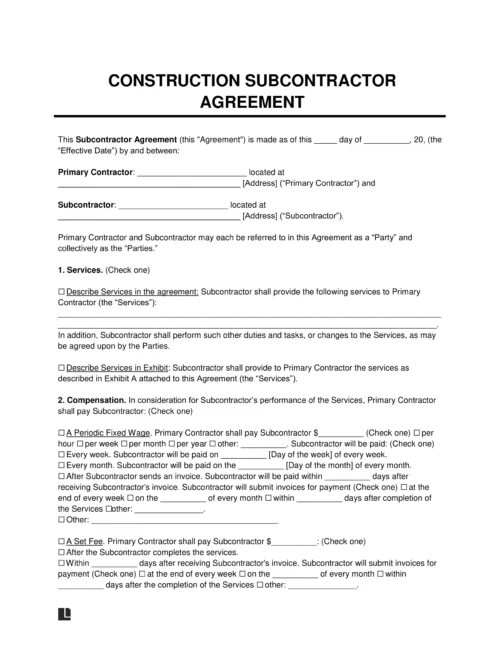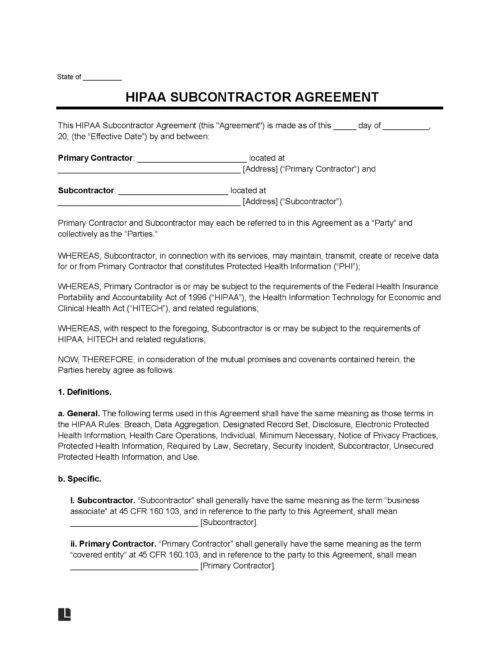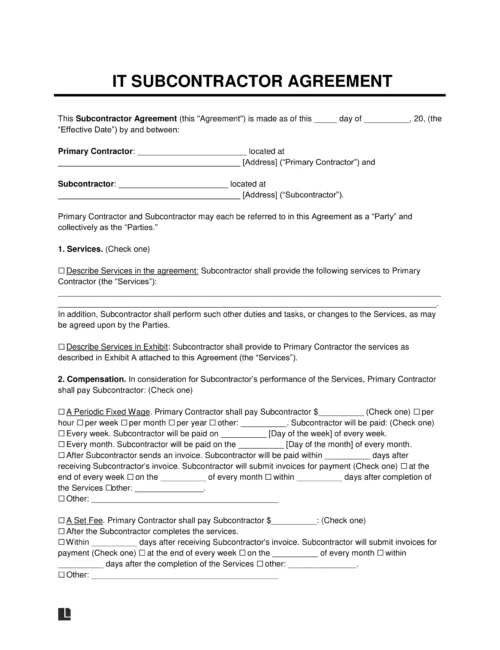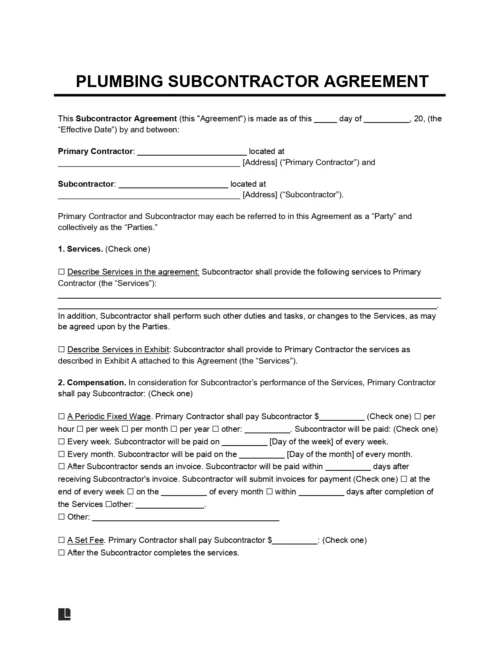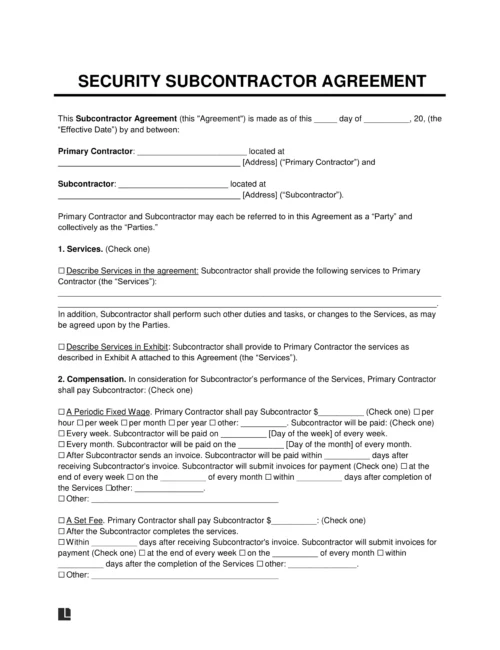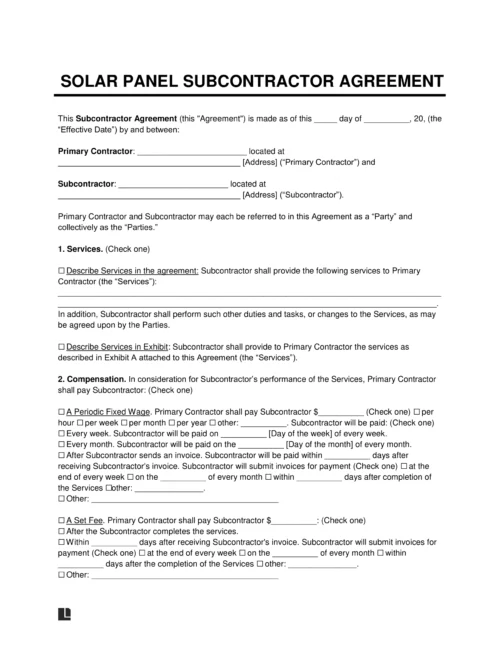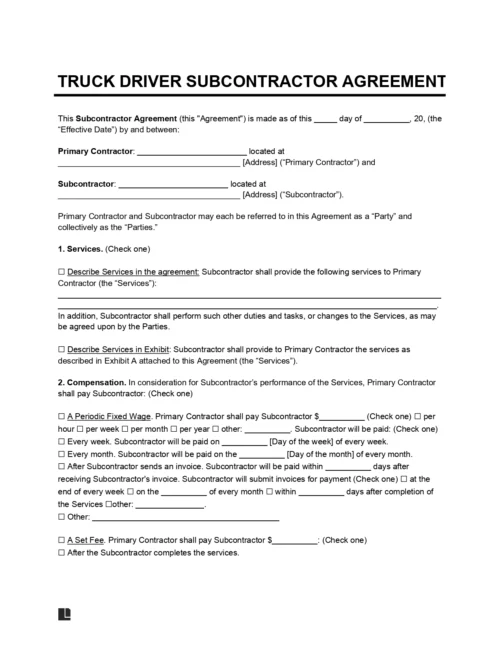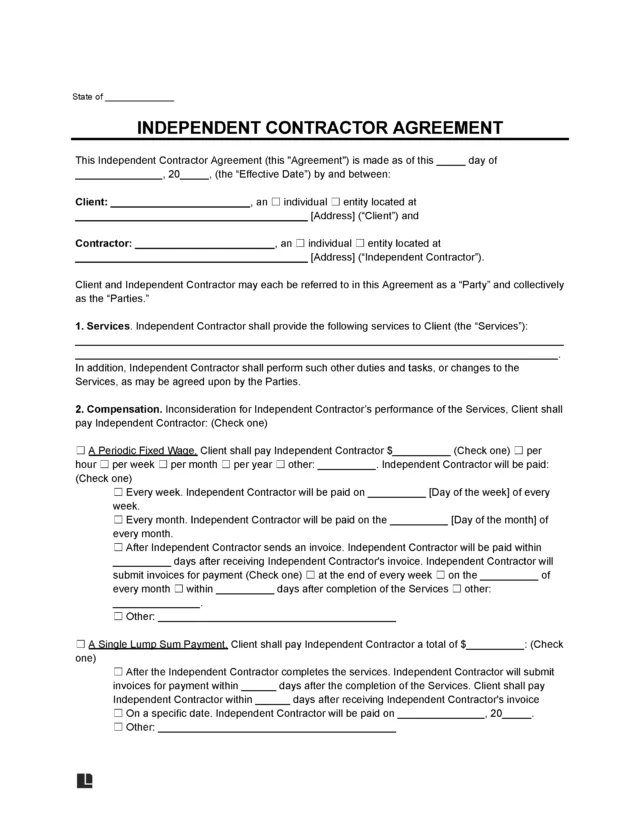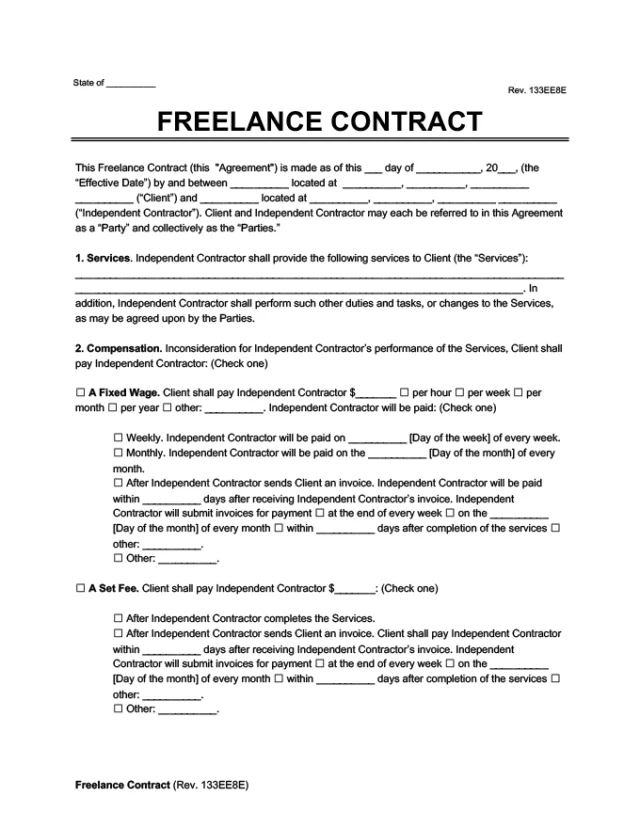Subcontractor Agreements – By Type
Subcontractor Agreement – By State
- Alabama
- Alaska
- Arizona
- Arkansas
- California
- Colorado
- Connecticut
- Delaware
- District of Columbia
- Florida
- Georgia
- Hawaii
- Idaho
- Illinois
- Indiana
- Iowa
- Kansas
- Kentucky
- Louisiana
- Maine
- Maryland
- Massachusetts
- Michigan
- Minnesota
- Mississippi
- Missouri
- Montana
- Nebraska
- Nevada
- New Hampshire
- New Jersey
- New Mexico
- New York
- North Carolina
- North Dakota
- Ohio
- Oklahoma
- Oregon
- Pennsylvania
- Rhode Island
- South Carolina
- South Dakota
- Tennessee
- Texas
- Utah
- Vermont
- Virginia
- Washington
- West Virginia
- Wisconsin
- Wyoming
What Is a Subcontractor Agreement?
A subcontractor agreement is a contract between a general contractor and a subcontractor. It defines how they work together and what each side is responsible for. The client hires the general contractor, and the general contractor brings in the subcontractor for specialized work.
Subcontractors usually handle skilled tasks such as electrical, plumbing, or IT. They may be freelancers, independent contractors, or vendors. A subcontractor agreement often covers:
- Who the subcontractor reports to (always the general contractor, not the client)
- How payment is set and managed
- Liability and insurance responsibilities
- Standards for performance and deadlines
By putting these terms in writing, the contractor avoids surprises over costs and deadlines, while the subcontractor knows exactly what work is expected and when payment will be made. Overall, it helps make sure the work gets done right and on time.
A subcontractor letter of intent comes before the full agreement. It covers the basics, shows commitment without being binding, and acts as a placeholder while the final contract is prepared.
How to Write a Subcontractor Agreement
A subcontractor agreement should answer practical questions upfront. Who is responsible for what, when the work begins and ends, how payment is handled, and what protections apply if problems come up. The easiest way to cover these points is to walk through each one step by step.
1. Who Are the Parties Involved?
Every subcontractor agreement should begin by stating who is entering the contract. List the contractor and subcontractor by full legal names. If either is a business, include the registered company name and full address for notices. This makes it clear who’s bound by the agreement and ensures both parties can be reached if something comes up.
2. What Services Will the Subcontractor Provide?
Next, describe the services in detail. Avoid vague terms like “construction work.” Instead, be specific, such as “installing HVAC systems” or “providing IT security testing.” If the work is complex, attach an exhibit with the full scope. Note whether safety standards, building codes, or public works rules apply.
3. How Will Payment Work?
Once the services are defined, the next step is payment. The agreement should set the structure and timing clearly:
- Say how payment works, whether it’s hourly, a lump sum, or tied to milestones.
- Note when invoices are due and how they should be submitted.
- Explain the payment timeline, including how many days the contractor has to pay.
- List reimbursable expenses, such as travel, lodging, or materials.
- Ask for receipts for any expenses that will be reimbursed.
These details give the subcontractor confidence that their work will be paid for fully and on time. They also help cut down on any potential issues.
4. When Does the Work Start and End?
The agreement should also cover timing. Both the start and end of the subcontractor’s work need to be clear:
- Record the official start date, either on signing or another agreed date.
- Set the end terms, such as project completion, a calendar date, or a fixed period.
- Explain how project changes will affect the terms of the agreement.
- State the notice period required for early termination, if allowed.
- Specify partial payment terms if the work ends before completion.
This way, both sides know when the subcontractor’s work begins, how long it should run, and what happens if the job wraps up sooner than expected.
4. Will the Subcontractor Access Confidential Information?
If the subcontractor will handle sensitive material, add a confidentiality section. Define what counts as confidential, such as designs, project data, or client records. State how long the obligation lasts after the agreement ends.
5. Who Owns the Work Product and Intellectual Property?
Ownership needs to be clear. In most cases, the contractor owns the work once payment is made. If the subcontractor keeps any rights, the agreement should explain whether the contractor receives a license or full rights to use the work.
6. Does the Subcontractor Need Insurance?
Address insurance requirements directly. List the types of coverage the subcontractor must carry, such as general liability or workers’ compensation. Be clear about coverage limits, and require proof of insurance before any work starts.
7. Are There Post-Work Restrictions?
Finally, decide if restrictions apply once the work is finished. A non-compete may prevent the subcontractor from working with direct competitors for a set period. A non-solicit may stop them from contacting the contractor’s clients or employees.
Covering these points step by step creates a subcontractor agreement that is specific, enforceable, and practical. It gives both sides a solid footing to build on.
If you have to cut a subcontract short, use a termination letter. It gives a clear written notice and confirms exactly when the contract ends.
Subcontractor Agreement Sample
Before writing your own, it helps to see how a subcontractor agreement looks in practice. Take a look at our sample subcontractor agreement to understand the structure and key terms. When you’re ready, you can download a subcontractor agreement in PDF or Word to make the process easier.




